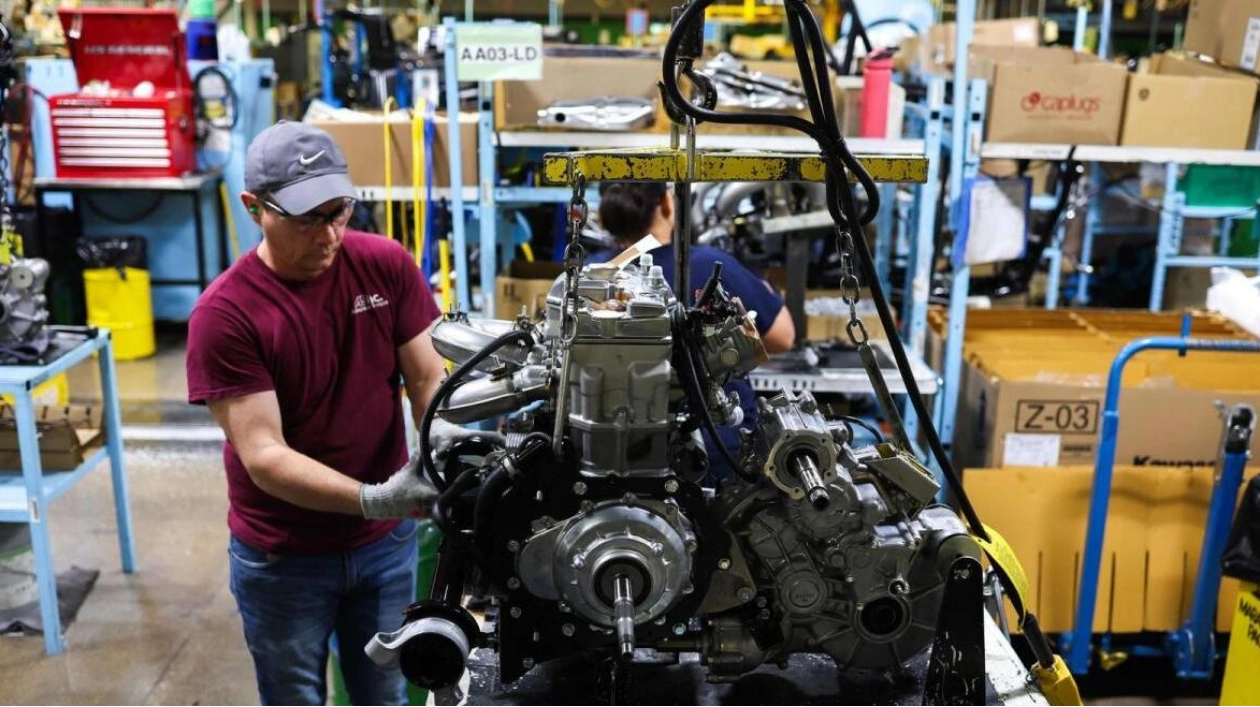In June, U.S. employment saw a robust increase, with government and healthcare sectors accounting for roughly three-quarters of the new jobs. However, the unemployment rate reached a 2-1/2-year high of 4.1%, indicating a weakening labor market that may prompt the Federal Reserve to reduce interest rates soon. The Labor Department's key employment report revealed on Friday also showed that the economy generated 111,000 fewer jobs in April and May than initially estimated, suggesting a slowdown in job growth.
Annual wage growth slowed to its lowest in three years, reflecting an expanding labor market, which adds to the concerns about the jobs market. Approximately 277,000 people entered the labor force, contributing to the rise in the unemployment rate from 4.0% in May to the highest level since November 2021. This, combined with the moderation in prices in May, could enhance the Federal Reserve's confidence in the inflation outlook, especially after the disinflationary trend was interrupted in the first quarter. Financial markets anticipate the U.S. central bank, which tightened monetary policy aggressively in 2022 and 2023, to begin easing in September.
Nonfarm payrolls rose by 206,000 jobs last month, largely due to government hiring, according to the Bureau of Labor Statistics. Economists predicted a 190,000 increase in payrolls with the unemployment rate remaining at 4.0%. Job growth averaged about 222,000 per month in the first half of this year. Analysts estimate the economy needs to create between 180,000 and 200,000 jobs per month to keep pace with the growth in the working-age population, considering the recent surge in immigration.
The Quarterly Census of Employment and Wages (QCEW), a lagging indicator, suggests a slower job growth through the fourth quarter of 2023 compared to the payrolls data. The QCEW data, sourced from state unemployment insurance (UI) reports, may be revised downwards when the BLS releases its payrolls benchmark estimate for the 12 months through March this year. However, economists argue that the QCEW data does not include unauthorized immigrants, who likely contributed to strong job growth last year.
Despite continued hiring in sectors like healthcare and state and local governments, the proportion of industries reporting job growth rose to 59.6% from 56.4% in May. Government employment surged by 70,000 jobs, the most since December, driven by local government, excluding education and state government. Private payrolls increased by 136,000, with healthcare and social assistance adding 82,400 positions. Construction payrolls rose by 27,000, but the retail and manufacturing sectors lost jobs. Professional and business services employment declined by 17,000 jobs, with temporary help jobs dropping by about 49,000, the most since April 2020.
Stock markets on Wall Street were mostly higher. The dollar weakened against a basket of currencies, and U.S. Treasury prices rose. The Fed's rate hikes since 2022 and the depletion of excess savings from the COVID-19 pandemic are reducing demand. Traders see a roughly 77% chance of a rate cut at the Fed's September meeting, with increasing chances of a second cut in December. The Fed has kept its benchmark overnight interest rate in the 5.25%-5.50% range since last July. Average hourly earnings rose 0.3% last month after a 0.4% increase in May. Over the past 12 months, wages increased by 3.9%, the smallest gain since June 2021.
Despite the softer underlying details, the employment report supports continued economic expansion. However, the second consecutive monthly increase in the unemployment rate could signal rising joblessness. The household survey showed employment rebounding by 116,000 in June, insufficient to meet demand. The unemployment rate has risen by six-tenths of a percentage point from a low of 3.5% last July. The household survey has shown minimal job growth compared to nonfarm payrolls, possibly underestimating immigration.
The number of long-term unemployed increased by 166,000 to 1.516 million in June, but fewer people reported working part-time for economic reasons. The labor force participation rate rose to 62.6% from 62.5% in May. The participation rate for prime-age workers increased to 83.7%, the highest since February 2002.






